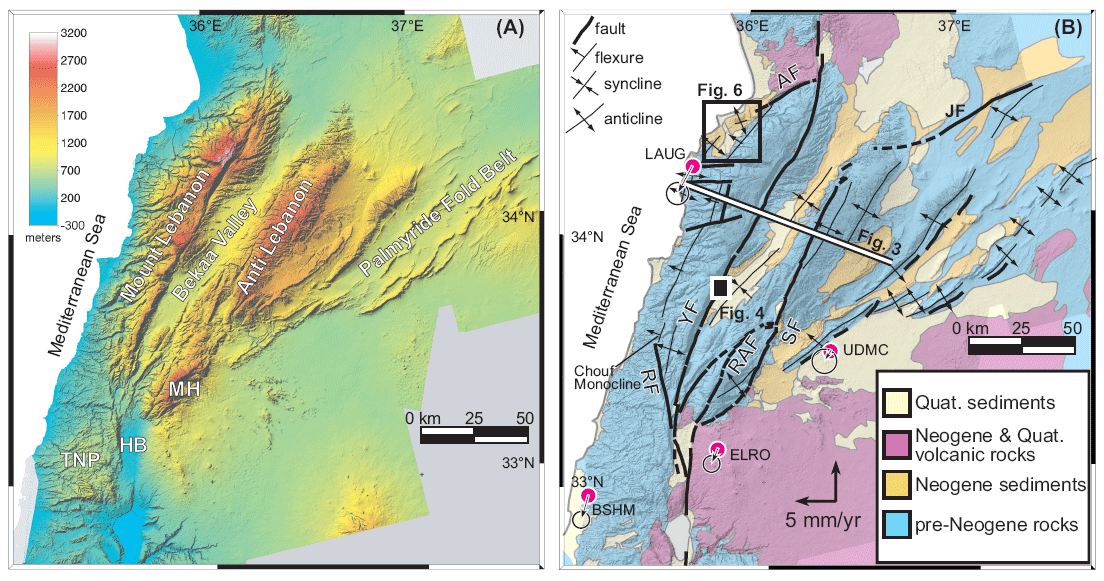
Recent neotectonic, palaeoseismic, and GPS results along the central Dead Sea fault system elucidate the spatial distribution of crustal deformation within a large (~180 km long) restraining bend along this major continental transform. Within the "Lebanese" restraining bend, the Dead Sea fault system splays into several key branches, and we suggest herein that active deformation is partitioned between NNE-SSW strike-slip faults and WNW-ESE crustal shortening. When plate motion is decomposed into strike-slip parallel to the two prominent NNE-SSW strike-slip faults (the Yammouneh and Serghaya faults) and orthogonal motion, their slip rates are sufficient to account for all expected strike-slip motion. Shortening of the Mount Lebanon range is inferred from the geometry and kinematics of the Roum fault, as well as preliminary quantification of coastal uplift. The results do not account for all expected crustal shortening, suggesting that some contraction is likely accommodated in the Anti Lebanon range. It also seems unlikely that the present kinematic configuration characterizes the entire Cenozoic history of the restraining bend. Present-day strain partitioning contrasts with published observations on finite deformation in Lebanon demonstrating distributed shear and vertical-axis block rotations. Furthermore, the present-day proportions of strike-slip displacement and crustal shortening are inconsistent with the total strike-slip offset and the lack of a significantly thickened crust. This suggests that the present rate of crustal shortening has not persisted for the longer life of the transform. Hence, we suggest that the Lebanese restraining bend evolved in a polyphase manner: An earlier episode of wrench-faulting and block rotation, followed by the later period of strain partitioning.
Click here for a PDF of the published paper.
This material has been submitted to The Journal of the Geological Society of London, the only definitive repository of the content that has been certified and accepted after peer review. Copyright and all rights therein are retained by The Geological Society of London.
© The Geological Society of London
Figure 2. (A) Map showing topography of the Lebanese restraining bend from a 20-meter-pixel, InSAR-derived DEM (Gomez et al. 2006). (B) Map showing general geology (simplified from Dubertret 1955) and structure of the restraining bend (simplified from Gomez et al. 2006). Arrows indicate velocities of continuous GPS sites (red circles) in an Arabia-fixed reference frame (Reilinger et al. 2006, in press). GPS velocities depict the net left lateral shear across the Dead Sea fault system in this area. White line = location of Figure 3 cross section. Abbreviations: YF = Yammouneh fault, SF = Serghaya fault, RF = Roum fault, RaF = Rachaya fault, JF = Jhar fault, HB = Hula basin, MH = Mt. Hermon, TNP = Tyre-Nabatieh Plateau.
